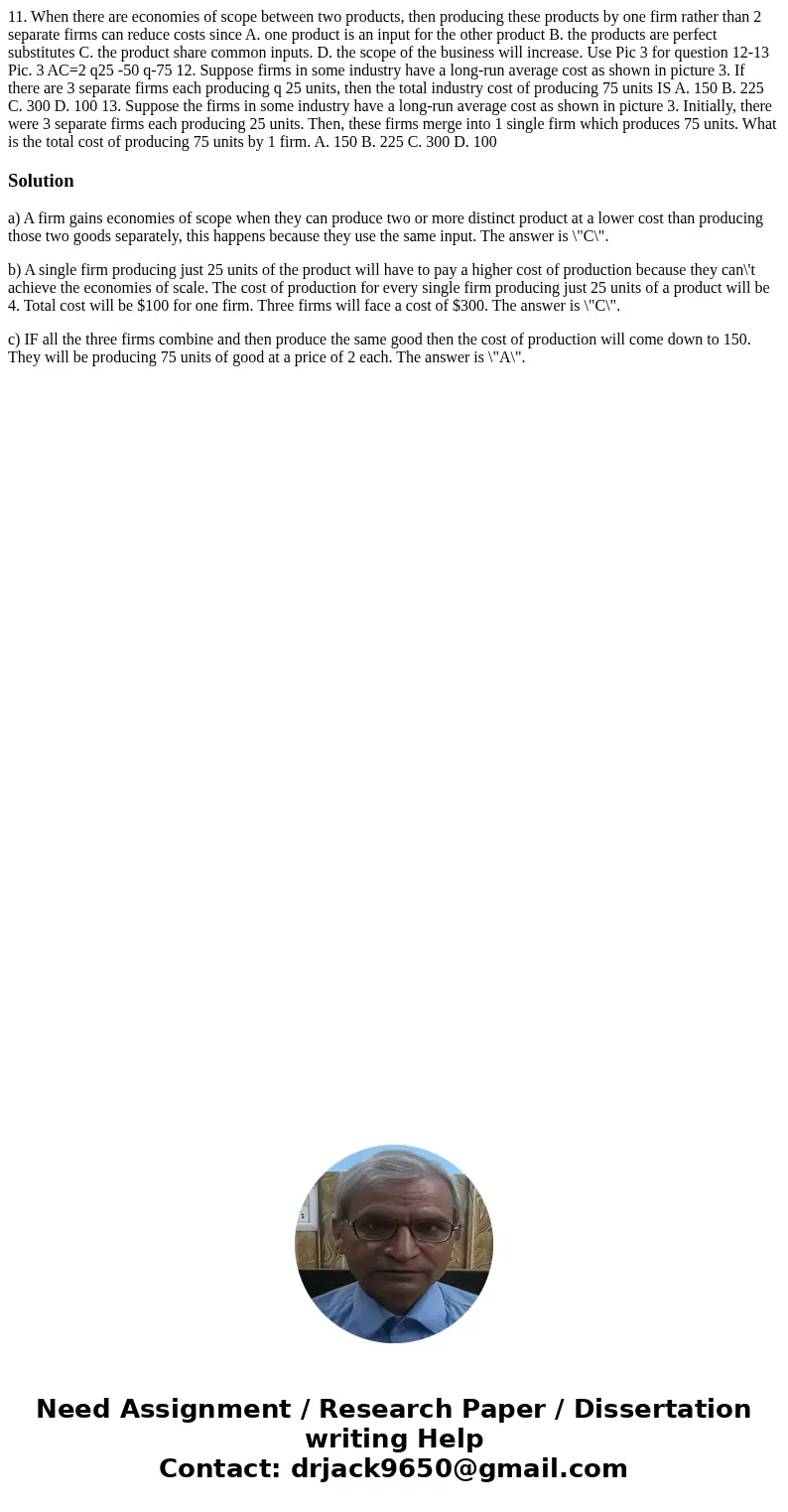11. When there are economies of scope between two products, then producing these products by one firm rather than 2 separate firms can reduce costs since A. one product is an input for the other product B. the products are perfect substitutes C. the product share common inputs. D. the scope of the business will increase. Use Pic 3 for question 12-13 Pic. 3 AC=2 q25 -50 q-75 12. Suppose firms in some industry have a long-run average cost as shown in picture 3. If there are 3 separate firms each producing q 25 units, then the total industry cost of producing 75 units IS A. 150 B. 225 C. 300 D. 100 13. Suppose the firms in some industry have a long-run average cost as shown in picture 3. Initially, there were 3 separate firms each producing 25 units. Then, these firms merge into 1 single firm which produces 75 units. What is the total cost of producing 75 units by 1 firm. A. 150 B. 225 C. 300 D. 100
a) A firm gains economies of scope when they can produce two or more distinct product at a lower cost than producing those two goods separately, this happens because they use the same input. The answer is \"C\".
b) A single firm producing just 25 units of the product will have to pay a higher cost of production because they can\'t achieve the economies of scale. The cost of production for every single firm producing just 25 units of a product will be 4. Total cost will be $100 for one firm. Three firms will face a cost of $300. The answer is \"C\".
c) IF all the three firms combine and then produce the same good then the cost of production will come down to 150. They will be producing 75 units of good at a price of 2 each. The answer is \"A\".

 Homework Sourse
Homework Sourse